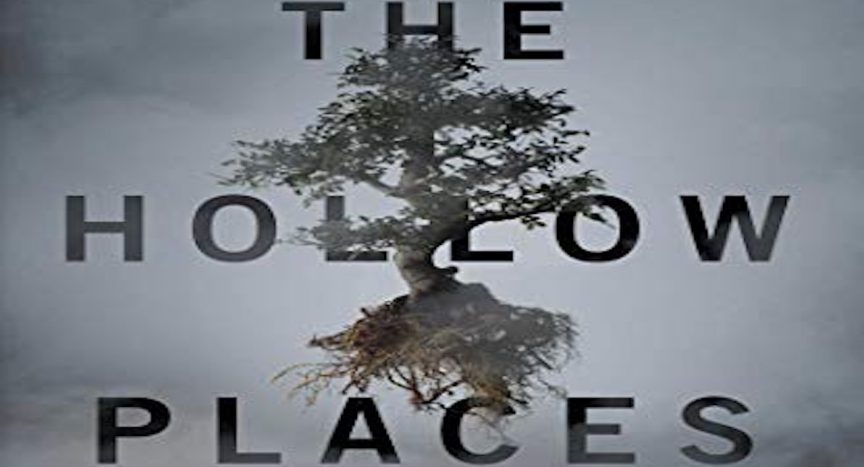Algernon Blackwood’s “The Willows” is one of the best pieces of horror fiction ever written. In Blackwood’s story, two travelers get lost on a canoe trip along the Danube. They land on an island where the titular willows are everywhere. The travelers soon realize that the plants are reading their minds. The more they think about the extradimensional willows, the more powerful the willows become. (You can read the story at Project Gutenberg for free). It’s terrifying in the story, and equally terrifying in T. Kingfisher’s The Hollow Places, which riffs on Blackwood’s concept.
Kingfisher’s main character, Carrot (Kara with red hair who never shook her childhood nickname), is running her Uncle Earl’s “Glory to God Museum of Natural Wonders, Curiosities and Taxidermy” while he has knee surgery. It’s smooth sailing until she finds a hole in the wall. She convinces Simon, the proprietor of the coffee shop next door, to help her patch it. But when they find that the hole leads to a hallway, they decide to explore. Á la House of Leaves, this hall is impossibly long, going past where the coffee shop should start and where the building should end on the outside.
The two of them inadvertently slip through a portal to another world, covered in willows, bunkers, and other manners of monsters. While Blackwood’s “The Willows” implies the dimension the willows are from, Kingfisher takes readers to it. It’s an absolutely horrifying setting.
RELATED: Color Out of Space is the Adaptation Arkham Deserves
The willows dominate this dimension. They function much like the 2000s era “The Game,” which only has one rule: if you think of the Game, you lose. If you think of the willows, they can see you, which is a problem because if they can see you, they’ll hunt you. To make matters worse, they’re not the only things hunting Carrot and Sam.
The way Kingfisher builds up her monsters before they appear on the page is one of The Hollow Place’s strengths. Carrot and Simon find mysterious writing on the wall saying “Pray they are hungry,” and a Bible from a different universe (which calls to mind the extradimensional Bible in Helen Phillip’s excellent 2019 novel The Need) long before they realize they are being hunted. As they move through this world, Kingfisher shifts the tone, which she has great control over throughout.
The book’s tone is whimsical at first. Carrot hilariously catalogues the “Glory to God Museum of Natural Wonders, Curiosities and Taxidermy” before introducing us to the rest of the businesses on the street, such as “The boutique clothing store [that] goes out of business approximately once a year, whereupon someone buys it, changes out the name and the scented candles, and proceeds to gently lose money for another year.” When she meets Sam, he’s quick to inform her, “Oh , you haven’t been around for a while! Yeah. Turns out my left eye’s got some rare form of color blindness that only women get. So they think I’m probably a chimera and ate my twin in the womb and it’s actually her left eye.” That feeling of whimsy, much of it generated by Carrot’s excellent voice, comes to a dead stop once they pass through the portal. That tonal shift helps The Hollow Places to put viewers into this new world.
What’s better yet is Kingfisher’s excellent characterization of both Carrot and Simon means that readers actually care what happens to them. Bad horror kills forgettable characters in increasingly brutal ways. Good horror doesn’t need anyone to die to generate fear because it’s happening to people audiences care about.
If there’s anything wrong with The Hollow Places, it’s that it has too many descriptions that contrast the novel against movies. For example, Simon says, “Carrot, if this was a movie, I’d slap you to snap you out of it, but I don’t think that actually helps.” Those descriptions don’t work because they’re too many of them throughout, and begin to have the opposite of the intended effect. That kind of description is designed to make readers feel as though this were a different kind of story, a realer one, but when it keeps happening it breaks the fictive dream. After the third time, it reminds readers that this is a fictional story, rather than immersing them more deeply.
That aside, The Hollow Places is strong work from Hugo and Nebula award winner Kingfisher, who previously published a number of children’s books and graphic novels as Ursula Vernon, and 13 prose novels under the T. Kingfisher pen names. With well-developed characters, a seamless control of tone, and horrifying monsters, The Hollow Places takes Algernon Blackwood’s classic short story into a new century.
Wicked Rating – 8/10
Saga Press will publish The Hollow Places by T. Kingfisher on October 6, 2020.
